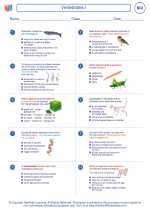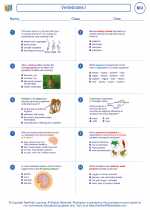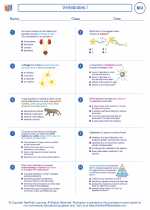Islands
Islands are unique ecosystems that are isolated from the mainland. They can be formed from volcanic activity, land emergence, or as a result of changes in sea levels. The isolation of islands can lead to the evolution of endemic species and distinct ecological communities. In this study guide, we will explore the characteristics of islands, their biodiversity, and the ecological processes that shape island ecosystems.
Characteristics of Islands
Islands vary in size, shape, and geological features. They can be classified as oceanic or continental based on their origin. Oceanic islands are formed from volcanic activity and are located in the open ocean, while continental islands are part of the continental shelf and were once connected to the mainland. The size of islands can range from small atolls to large landmasses such as Greenland or Madagascar.
Types of Islands
- Volcanic Islands: Formed from volcanic activity, such as Hawaii and the Galapagos Islands.
- Continental Islands: Once connected to the mainland, such as Great Britain and Borneo.
- Barrier Islands: Long, narrow, offshore deposits of sand or sediment that parallel the coastline.
- Atolls: Ring-shaped coral reefs that encircle a lagoon, often found in the Pacific Ocean.
Biodiversity on Islands
Islands are known for their unique biodiversity, often with a high number of endemic species that are found nowhere else. The isolation of islands can lead to speciation, where new species evolve to fill ecological niches. However, islands are also vulnerable to biodiversity loss due to human activities and invasive species introductions.
Endemic Species
Endemic species are those that are native to a specific geographic area and are not naturally found anywhere else. Examples of endemic species include the Galapagos giant tortoise and the kiwi bird of New Zealand.
Island Biogeography
Island biogeography is the study of the distribution and abundance of species on islands. It examines the factors that affect species richness, such as island size, distance from the mainland, and immigration/extinction rates. The theory of island biogeography has important implications for conservation efforts on islands.
Ecological Processes on Islands
Islands are shaped by ecological processes such as colonization, speciation, and extinction. The unique conditions of islands, including limited resources and small population sizes, can lead to distinct ecological patterns and processes.
Colonization and Extinction
Colonization of islands by new species can occur through long-distance dispersal, such as seeds carried by ocean currents or birds. However, the limited size and resources of islands can also make species vulnerable to extinction, especially in the presence of human activities and invasive species.
Speciation and Adaptive Radiation
Islands provide opportunities for speciation, where new species evolve from a common ancestor due to isolation and ecological opportunities. Adaptive radiation, the diversification of a single ancestral species into a variety of forms, is often observed on islands with diverse habitats and ecological niches.
By understanding the unique characteristics and ecological dynamics of islands, we can appreciate the importance of conservation efforts to protect these valuable ecosystems and the biodiversity they harbor.
.◂Biology Worksheets and Study Guides High School. Vertebrates I

 Worksheet/Answer key
Worksheet/Answer key
 Worksheet/Answer key
Worksheet/Answer key
 Vocabulary/Answer key
Vocabulary/Answer key
 Vocabulary/Answer key
Vocabulary/Answer key
 Vocabulary/Answer key
Vocabulary/Answer key
